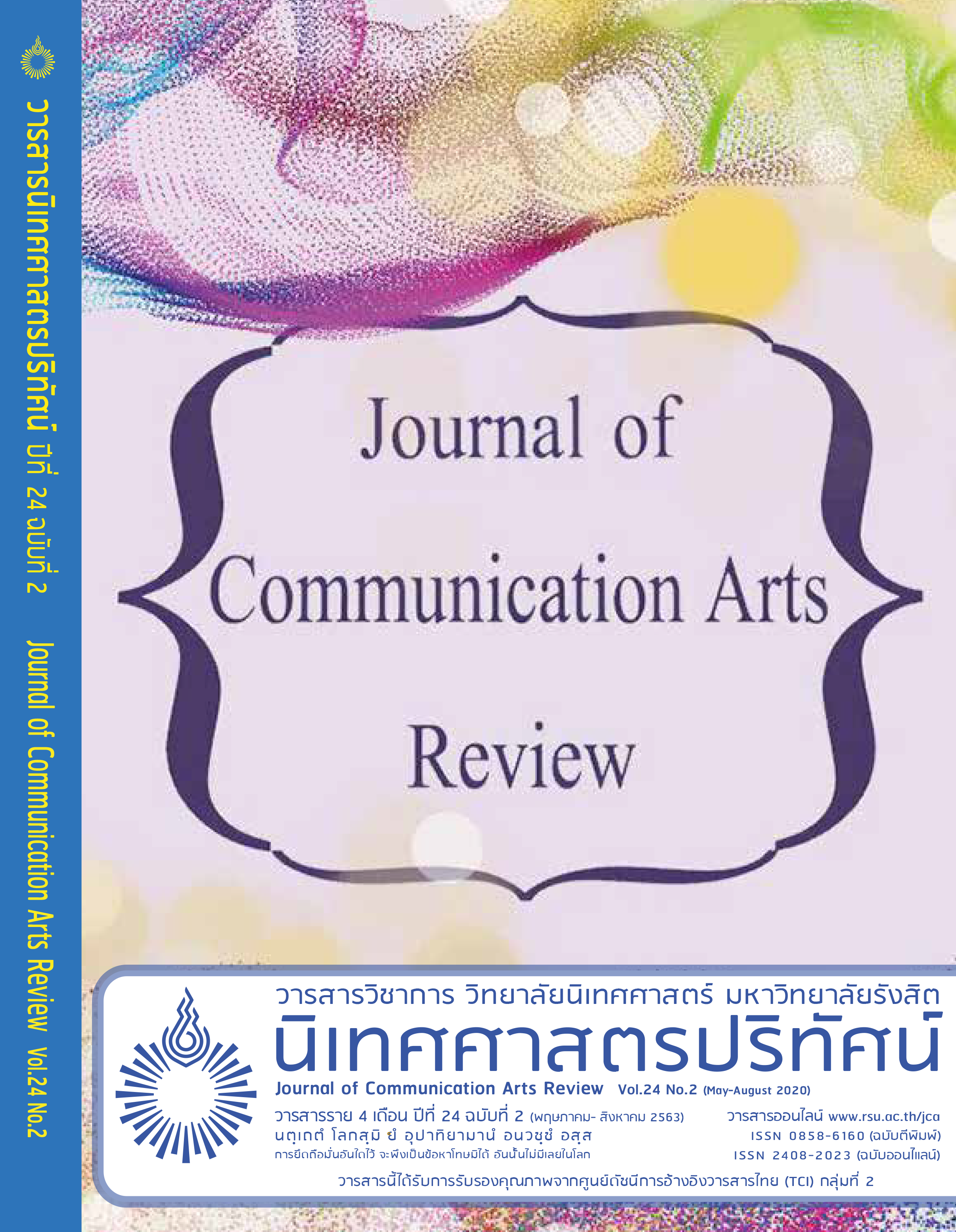Perspectives of Thai youths towards Thai artists in the Korean music industry
Keywords:
Thai artists in Korean music industry, Korean popular culture, Transnational culture, Thai youths, PerspectivesAbstract
This paper examines the images of Thai artists in the Korean music industry to identify cultural impacts towards this argument which will be covered by Thai youths’ perspectives. This paper also compares the youths’ views on the recent Thai music industry with the K-pop music industry where Thai entertainers work to find out whether the enhancement of K-pop in the Thai music industry has impacts on the Thai youth’s perspectives. This paper argues that Thai youths expressed a mutual feeling among themselves as a shared feeling of being Thai and positive points of view. This indents on how Thai youths perceived them as they felt proud of and had become a national pride. The paper also illustrates Thai youths’ perspectives on K-pop-inspired Thai entertainers in Thai Music Industry to make a better understanding of the transnational cultural effect of Korean popular culture. Data presented in this paper comes from textual analysis as well as in-depth interviews with 5 Thai youths.
References
Ainslie, M. J. (2016). K-dramas across Thailand: Constructions of Koreanness and Thainess by contemporary Thai consumers. The Asia-Pacific Journal, 14(7), 1-15.
Bergen, H. N. (2011). Understanding Korean Society through Popular Music. Situations: Cultural Studies in the Asian Context, 5, 90-97.
Gregson, K. S. (2007). Youth Culture. In Encyclopedia of Children, Adolescents, and the Media. Thousand Oaks, California: SAGE Publications, Inc. doi:10.4135/9781412952606
Hong, S.-K., Park, S., Park, D., & OH, S. (2019). Geography of Hallyu Studies: Analysis of Academic Discourse on Hallyu in International Research. Korea Journal, 59(2), 111-143.
Howard, K., & Lekakul, G. (2018). K-Pop as a Means to an End among Thai Youth: Korean Wave as Costume, Food, and Image. Culture and Empathy: International Journal of Sociology, Psychology, and Cultural Studies, 1(2), 18-33. doi:10.32860/26356619/2018/1.1234.0003
Jung, S. (2014). Youth, Social Media and Transnational Cultural Distribution: The Case of Online K-pop Circulation. In A. Bennett & B. Robards (Eds.), Mediated Youth Cultures: The Internet, Belonging and New Cultural Configurations (pp. 114-129). London: Palgrave Macmillan UK.
Kim, C. N. (2012). K-pop: Roots and Blossoming of Korean Popular Music. Korea: Hollym International Corporation.
Kim, D. K., & Kim, S. J. (2012). Hallyu from its origin to present: A historical overview. In Hallyu Influence of Korean Popular Culture in Asia and Beyound. Seoul: SNU Press.
Kim, E. (2017). The Influence of “Thai Wave” Celebrities in Korean Popular Culture on the Thai Peoples’ Image held by Koreans: Focusing on Thai K-Pop Idols. (Master’s degree), Seoul National University, Seoul, Republic of Korea.
Kim, M. S. (2012). Riding the Korean Wave of Multiculturalism: Review and Future Prospects. In Hallyu: Influence of Korean Popular Culture in Asia and Beyound. Seoul: SNU Press.
Mathers, N., Fox, N., & Hunn, A. (2002). Trent Focus for Research and Development in Primary Health Care: Using Interviews in a Research Project. Sheffield: Trent Focus Group.
Miles, S. (2011). Youth Culture. In Encyclopedia of Consumer Culture. Thousand Oaks, California: SAGE Publications, Inc. doi:10.4135/9781412994248
Preedachaschavaan, P., Sakdivorapong, C., & Satitwityanan, S. (2013). Acceptance and behavioral imitation of Korean culture from Korean entertainment media among Thai teenagers Panyapiwat Journal, 5(1), 17-30.
Ryoo, W. (2009). Globalization, or the logic of cultural hybridization: the case of the Korean wave. Asian Journal of Communication, 19(2), 137-151. doi:10.1080/01292980902826427
Shim, D. (2008). The Growth of Korean Cultural Industries and the Korean Wave. In C. B. Huat & K. Iwabuchi (Eds.), East Asian Pop Culture (pp. 15-32): Hong Kong University Press.
Siriyuvasak, U., & Shin, H. (2007). “Asianizing K-pop: production, consumption and identification patterns among Thai youth.” Inter-Asia Cultural Studies, 8(1), 109-136. doi:10.1080/14649370601119113


